- Biz & IT

Experiments with paper airplanes reveal surprisingly complex aerodynamics
How these gliders keep level flight is different from the stability of airplanes.

Drop a flat piece of paper and it will flutter and tumble through the air as it falls, but a well-fashioned paper airplane will glide smoothly. Although these structures look simple, their aerodynamics are surprisingly complex. Researchers at New York University’s Courant Institute of Mathematical Sciences conducted a series of experiments involving paper airplanes to explore this transition and develop a mathematical model to predict flight stability, according to a March paper published in the Journal of Fluid Mechanics.
“The study started with simple curiosity about what makes a good paper airplane and specifically what is needed for smooth gliding," said co-author Leif Ristroph . "Answering such basic questions ended up being far from child’s play. We discovered that the aerodynamics of how paper airplanes keep level flight is really very different from the stability of conventional airplanes.”
Nobody knows who invented the first paper airplane, but China began making paper on a large scale around 500 BCE, with the emergence of origami and paper-folding as a popular art form between 460 and 390 BCE. Paper airplanes have long been studied as a means of learning more about the aerodynamics of flight. For instance, Leonardo da Vinci famously built a model plane out of parchment while dreaming up flying machines and used paper models to test his design for an ornithopter. In the 19th century, British engineer and inventor Sir George Cayley —sometimes called the "father of aviation"—studied the gliding performance of paper airplanes to design a glider capable of carrying a human.
An amusing "scientist playing with paper planes" anecdote comes from physicist Theodore von Kármán . In his 1967 memoir The Wind and Beyond , he recalled a formal 1924 banquet in Delft, The Netherlands, where fellow physicist Ludwig Prandtl constructed a paper airplane out of a menu to demonstrate the mechanics of flight to von Kármán's sister, who was seated next to him. When he threw the paper plane, "It landed on the shirtfront of the French minister of education, much to the embarrassment of my sister and others at the banquet," von Kármán wrote.

While scientists have clearly made great strides in aerodynamics—particularly about aircraft—Ristroph et al . noted that there was not a good mathematical model for predicting the simpler, subtler gliding flight of paper airplanes. It was already well-known that displacing the center of mass results in various flight trajectories, some more stable than others. “The key criterion of a successful glider is that the center of mass must be in the ‘just right’ place,” said Ristroph . “Good paper airplanes achieve this with the front edge folded over several times or by an added paper clip, which requires a little trial and error.”
He and his team verified this by test-flying various rectangular sheets of paper, changing the front weight by adding thin metallic tape to one edge. They found that an unweighted sheet tumbled end over end while descending left to right under the force of gravity. Adding a small weight to shift the center of mass slightly forward also produced a tumbling trajectory. Overall, they found that flyers with greater front-loading produced erratic trajectories full of swoops, climbs, flips, and dives.
The next step was to conduct more controlled and systematic experiments. Ristroph et al . decided to work with thin plastic plates "flying" through a large glass tank of water. The plates were laser-cut from an acrylic plastic sheet, along with two smaller "fins" embedded with lead weights to displace the center of mass, and they also serve as aerodynamic stabilizers. There were 17 plastic plates, each with a different center of mass. Each was released into the tank by sliding it down a short ramp, and the team recorded its free-flight motion through the water.
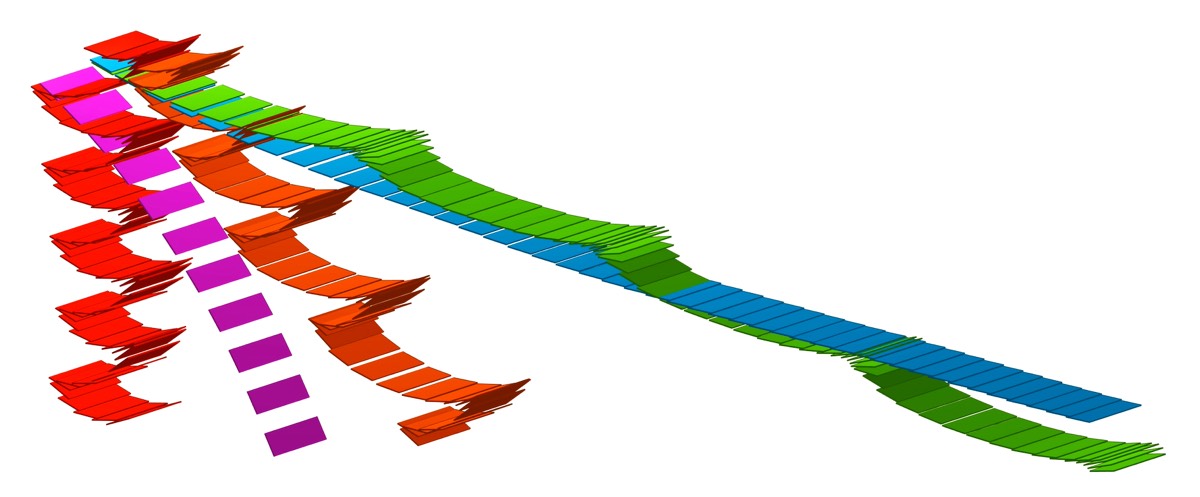
They found the same dynamics played out. If the weight was centered, or nearly so, at the center of the wing, the plate would flutter and tumble erratically. Displace the center of mass too far toward one edge, and the plate would rapidly nosedive and crash. The proverbial "sweet spot" was placing the weight between those extremes. In that case, the aerodynamic force on the plane's wing will push the wing back down if it moves upward, and push the wing back up if it moves downward. In other words, the center of pressure will vary with the angle of flight, thereby ensuring stability.
This differs substantially from conventional aircraft, which rely on airfoils—structures designed to generate lift. “The effect we found in paper airplanes does not happen for the traditional airfoils used as aircraft wings, whose center of pressure stays fixed in place across the angles that occur in flight,” said Ristroph . “The shifting of the center of pressure thus seems to be a unique property of thin, flat wings, and this ends up being the secret to the stable flight of paper airplanes. This is why airplanes need a separate tail wing as a stabilizer while a paper plane can get away with just a main wing that gives both lift and stability.”
The team also developed a mathematical model as a "flight simulator" to reproduce those motions. Ristroph et al. think their findings will prove useful in small-scale flight applications like drones or flying robots, which often require a more minimal design with no need for many extra flight surfaces, sensors, and controllers. The authors also note that the same strategy might be at work in winged plant seeds, some of which also exhibit stable gliding, with the seed serving as the payload to displace the center of mass. In fact, a 1987 study of the flying seeds of the gourd Alsomitra macrocarpa showed a center of mass and glide ratios consistent with the Ristroph group's optimal gliding requirements.
DOI: Journal of Fluid Mechanics, 2022. 10.1017/jfm.2022.89 ( About DOIs ).
Listing image: RUNSTUDIO/Getty Images

- 2. Buying a TV in 2025? Expect lower prices, more ads, and an OS war.
- 3. Trump to block the government and military from buying EVs
- 4. Why do we get headaches from drinking red wine?
- 5. T-Mobile users can try Starlink-enabled phone service for free during beta
An official website of the United States government
Here's how you know
Official websites use .gov A .gov website belongs to an official government organization in the United States.
Secure .gov websites use HTTPS. A lock ( Lock Locked padlock ) or https:// means you've safely connected to the .gov website. Share sensitive information only on official, secure websites.
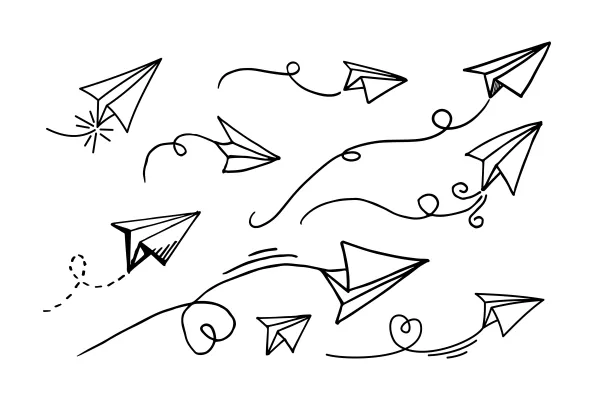
Cool Science: Paper airplanes, insect wings and the future of tiny drones
Conduct your own aerodynamics experiment at home
For nearly 200 years, in the great pursuit of knowledge about aerodynamics, researchers have been fascinated by paper airplanes. Even the simplest design – a plain sheet of paper with no wings or fins, nothing resembling a modern airplane – can provide insights into complex aerodynamic principles.
A rectangular sheet of paper will tumble to the ground like confetti, but adding just the right amount of weight, in just the right location, affects how the paper flies.
Leif Ristroph, an associate professor at New York University and self-described paper airplane fanatic, said the idea to study the aerodynamics of a falling sheet of paper began with curiosity about the movement.
“The magic that makes a paper airplane glide and not flutter is how you weight it. You don’t need all the other aspects,” Ristroph said. “It feels like someone must have observed this before because it seems so basic but I couldn’t find it. It’s worth understanding, then.”
And while designing a passenger airplane that resembles a sheet of paper is a horrible idea, he said, the research could contribute to new ways of thinking about the design of simple aircraft such as tiny drones.
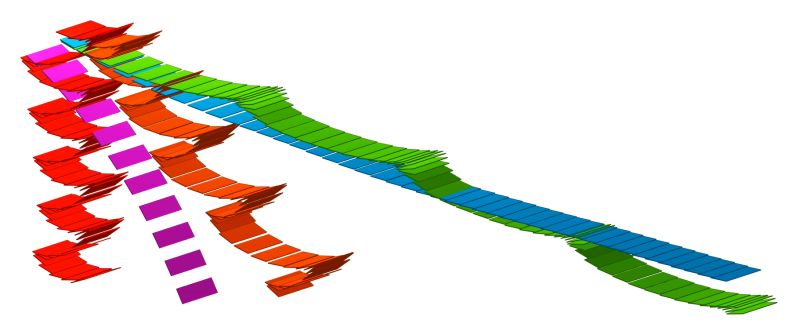
Observations in air and water
Researchers added strips of metallic tape to one of the long edges of a rectangular sheet to create varying degrees of front weight. When dropped, each sheet moves in a unique way. “There is kind of a magic spot for the balance point where you can get the best glide. If the balance point is too close to the middle, you will see fluttering and tumbling motions. If the balance point is too far forward, it will nose-dive and crash. The best point is about halfway between the middle of the sheet and the front edge. Then you will see a nice glider,” Ristroph said.
Part of Ristroph’s work for his doctorate in physics was studying insect flight and how flapping wings affect flight control and stability. The paper airplane study was not part of his planned research under a U.S. National Science Foundation grant , but the relationship between insect wings and falling paper stood out, and the results contribute to a more general understanding of animal flight and swimming dynamics.
Plus, sheets of paper are easier to maintain in the laboratory than insects, he said.
Ristroph also made observations using a water tank and thin plates of plastic, whose “flight” through water (video above) are governed by the same physics that determines the motions of paper falling through the air. In both instances, the rate and control of the fall was affected by the location of the weight and the impact it had on the center of mass. There is a “sweet spot” for the center of mass that produces a stable glide path.
Based on the results, Ristroph and his team created a mathematical model that serves as the basis of a “flight simulator,” a computer program that reproduces the different flight motions. No such model had previously existed for predicting gliding flight.
“The simulator can produce the full range of motions accurately. It describes the forces acting on the plate and finds out how the flyers should move based on the forces used in the equation. I think for the scientific community, that will translate well into something useful for everyone involved,” he said.
The findings could also contribute to new design methods for drones. “There are a lot of people working on making very small-scale flying robots. There are even some designs that are passive flyers – not powered – that are modeled on flying plant seeds that twirl like helicopters when they fall.”
These passive drones can be used for projects like air quality monitoring.
“There is an initiative to make small flyers, and at very small scales, simpler is better,” Ristroph said. “When you think about paper airplanes, it doesn’t get much simpler than that. I’m not an engineer who can make a useful flying robot, but I hope our findings will inspire others who can.”
“Studying toys is serious fun. Whether it’s a paper airplane or a spinning top, there is something scientifically valuable in finding out how they work.”
Experiments with aerodynamics at home
Ristroph’s research includes a component dedicated to training STEM students in aspects of modern applied mathematics, emphasizing the connections among modeling, simulation and experimental observation.
And his experiments are simple enough that they can be conducted anywhere. “I like to think of the whole world as a laboratory. There are simple experiments in front of you. The things you see around you are fascinating if you look at them in the right way,” he said.
Want to replicate the experiment at home? The basic materials are a notepad or copy paper about 6 inches long and 2 inches wide that can be folded and tape or paper clips that can be used to add weight.
“Studying toys is serious fun,” Ristroph said. “Whether it’s a paper airplane or a spinning top, there is something scientifically valuable in finding out how they work.”

About the Author
Related stories.
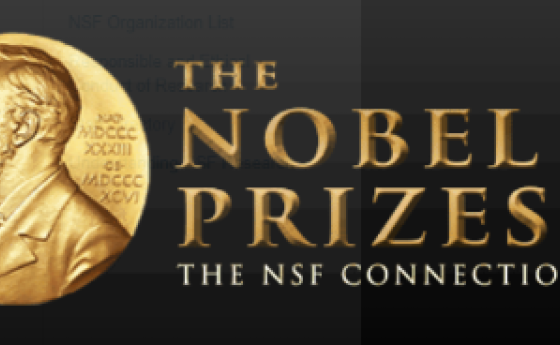
NSF continues strong legacy with Nobel Prize winners

Addressing real-world challenges using origami
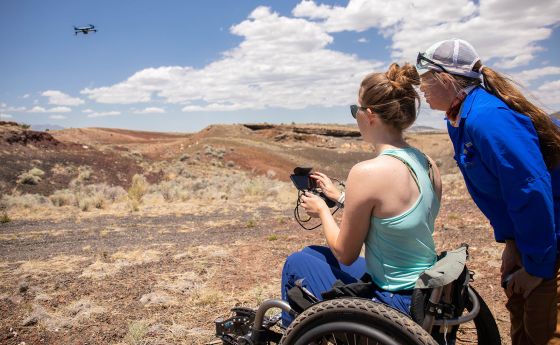
NSF supports efforts to emphasize the ability in 'disability'
